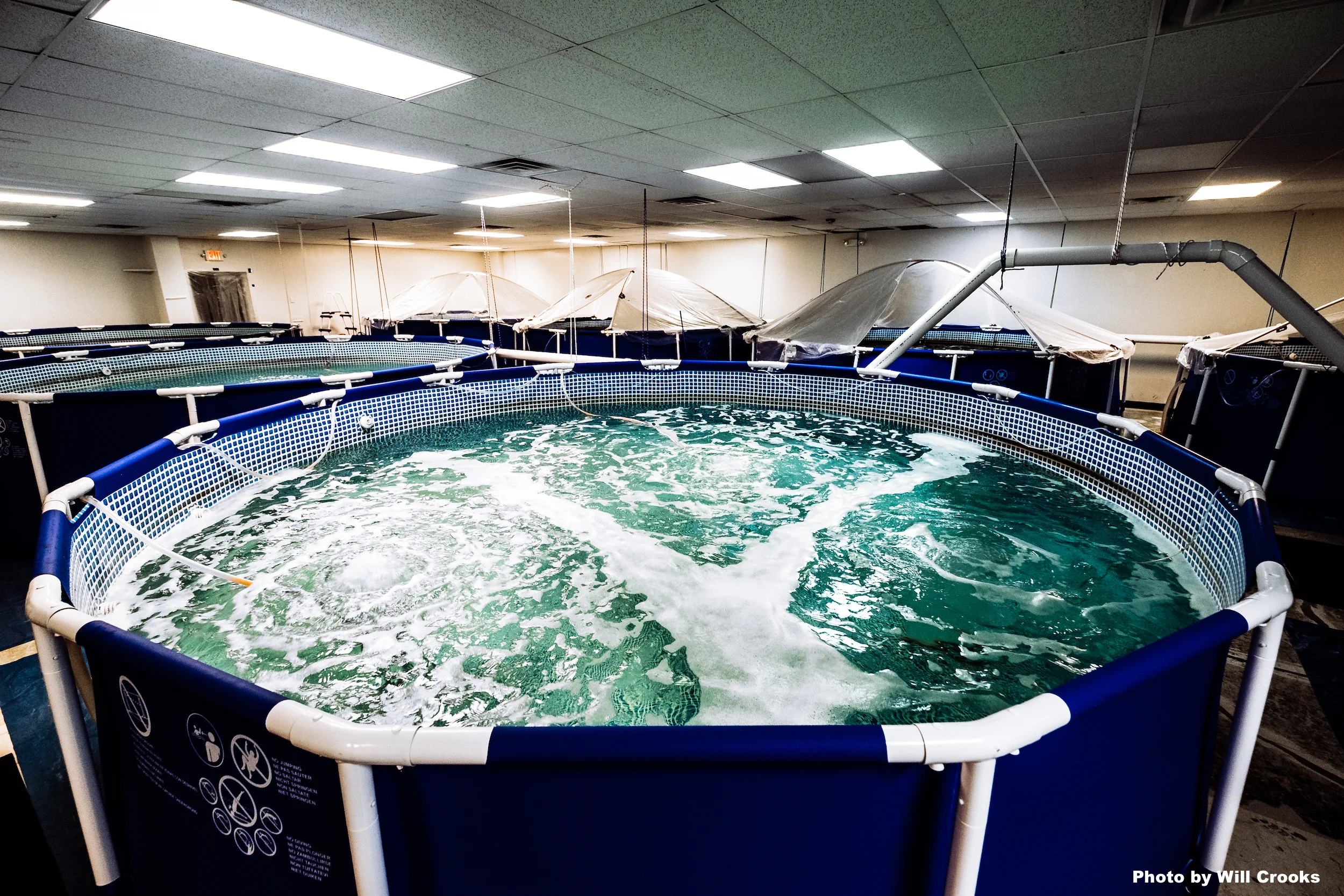What is aquaculture and why should one buy aquacultured shrimp over ocean-grown shrimp? That is a great question and one that I will briefly try to answer below.
There are three main ways to harvest shrimp: Open sea fishing, shrimp farming, and aquacultured shrimp. The first two are highly unsustainable and here's why:
Bottom Trawler. Image copyright © Michael C. Barnette. Lost at Sea. 2004
Open sea fishing can be done through several methods, but by far the most common is bottom trawling because it provides the highest yield. Bottom trawling essentially means taking a giant bulldozer and scraping it along the seafloor to scoop up all the shrimp, and all the other organisms living in the sand bed. The catch is hauled to the surface where the shrimp are separated to be put on ice and sold ashore. The rest of the fish are dumped back in the ocean, often already dead or seriously injured. Their home (the seafloor) is scraped clean and gone. These poor creatures are called bycatch and are an unfortunate casualty in the process of bottom trawling.
Example of a coastal shrimp farm on the island of Phu Thanh. Image Credit: Luc Forsyth and Gareth Bright, via drone.
Sea Farming: In order to avoid bycatch many industries have resorted to sea farming shrimp. There are many forms of farming, but the most common form is through coastal farms. Using the coastal ocean, a large net is anchored to create a barrier for the shrimp. Shrimp can’t escape the net, nor can other fishes enter, but water can circulate through. Unfortunately this has caused a lot of problems for the coastline. In order to build these giant nets the shoreline mangroves are cut down and the mangroves that aren't cut, quickly die from the chemicals and shrimp excrement leaching into the environment as high tide comes in. Many fish and invertebrates use the mangroves as a safety home, a breeding ground, and a feeding nursery. Mangroves also serve as a natural biofilter for marine nutrients that would be otherwise toxic in high concentrations.
Urban Seas Aquaculture system
Does that mean in order to eat shrimp, we must choose between trawled shrimp, and thus lot’s of bycatch, and farmed shrimp, and thus a destruction of the mangroves? No, we do not, for there is a third, much more sustainable option. Indoor, recirculating aquaculture! This is when shrimp are grown in large salt-water swimming pools where they are fully contained. The recirculating system produces little to no external waste. This environmentally friendly system is the perfect place for shrimp to be contained and survive on all of the essential nutrients they need to grow, and taste good to us!




